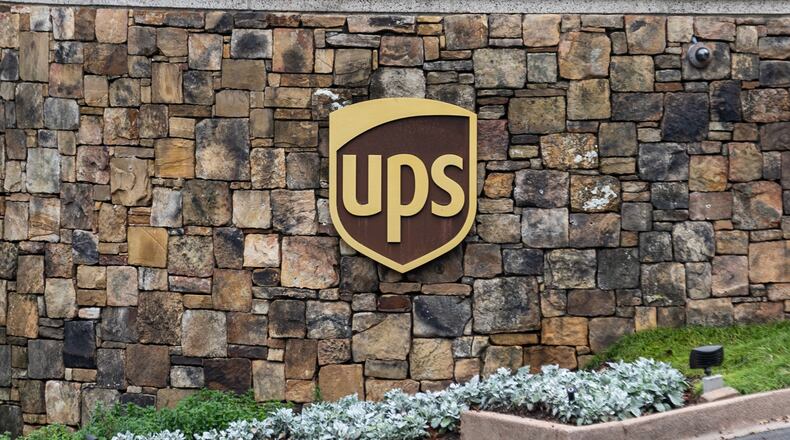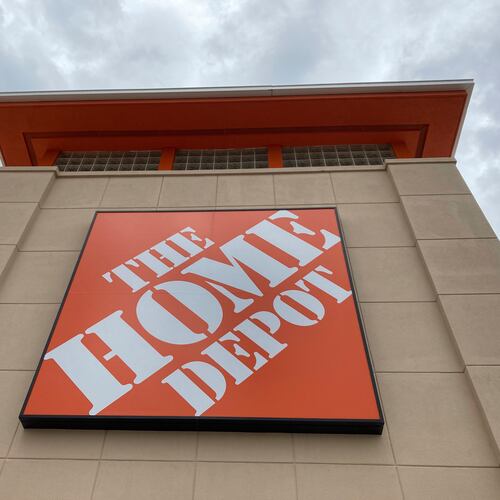After a sharp decline in revenue and profit last year, Sandy Springs-based UPS is charting a path to return to more than $100 billion in annual revenue and improved profitability.
A key tactic UPS is turning to is cutting jobs and using more automation to move packages, in an effort to reduce costs, improve efficiency and grow in the future.
The company has more than 1,000 facilities across the country and is closing about 200 of them, cutting jobs and consolidating the volume into automated facilities that use robotics and RFID tracking. It calls this its “network of the future.”
“An automated facility will require less headcount than a manual facility,” said UPS Chief Financial Officer Brian Newman. While UPS has been moving toward increased automation for years — including the opening of its Southeast regional “Smart Hub” in Fulton County in 2018 — it is now leaning fully into the use of automation to cut costs as it faces financial pressures.
UPS moves millions of packages a day and the company is a global economic bellwether for the health of consumers and businesses.
The company’s aim is to cut billions in costs over the next five years. “Certainly there will be headcount reduction,” Newman said. Cuts across the company are already being done through layoffs as well as significant turnover rates in package handling facilities.
“Executing ‘network of the future’ over the next five years will significantly reduce our dependency on labor and save $3 billion,” said UPS U.S. President Nando Cesarone told investors. “Every single work area is being scrutinized for automation opportunities.”
“We’re working really hard towards a ‘lights out’ facility here at UPS,” Cesarone said, referencing the concept of a fully-automated facility that does not rely on human labor and does not need lights on to function.
The new plan comes after UPS last year lost some business while negotiating a new labor contract with the Teamsters union, as some customers were concerned about the potential for a strike. The threat of a strike was alleviated when a deal was reached — but with the new labor contract, UPS saw its labor costs rise and the company had to work to win back business.
The company on Tuesday laid out to investors a plan to reach about $108 billion-$114 billion in annual revenue and better profit margins in 2026, through growth and higher productivity with automation in its package handling facilities.
UPS has been increasing its focus on particular segments it sees as having the most promise for high-profit growth, including the health care industry and small- and medium-sized businesses that need full-service logistics services.
But the basic package delivery business UPS is best known for has gone through a tumultuous few years.
UPS ramped up its operations and workforce during the COVID-19 pandemic as stay-at-home protocols drove spikes in online shopping, and by 2021 had more than 540,000 employees.
But package volumes dropped last year. UPS CEO Carol Tomé called 2023 “a unique, and quite candidly, a difficult and disappointing year.”
The company’s revenue declined 9.3% last year to about $91 billion and its profit declined nearly 42% to $6.7 billion, compared to 2022.
Now, the company has fewer than 500,000 employees. “We certainly flex the workforce to meet the demand,” Newman said. The company also announced earlier this year that it would cut 12,000 of its 85,000 managers to slash costs.
Three years ago, the U.S. small package market was expected to grow significantly by 2023, Tomé said during the company’s investor day and analyst conference at the UPS air hub in Louisville, Kentucky, on Tuesday.
“But changes in market conditions slowed market growth,” including high inflation that curbed consumer spending, as well as geopolitical tensions and wars that affected global trade, she said.
She signaled optimism for the future.
“We believe that the market has reset and the industry is poised to return to growth,” Tomé said.
About the Author
Keep Reading
The Latest
Featured




